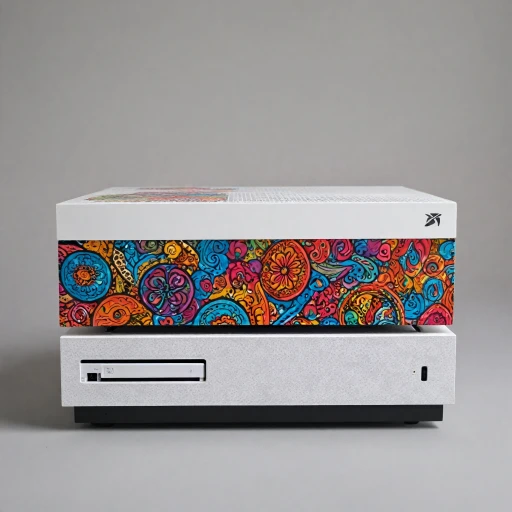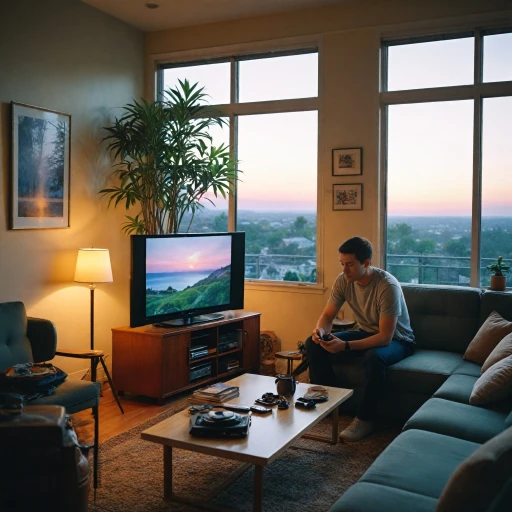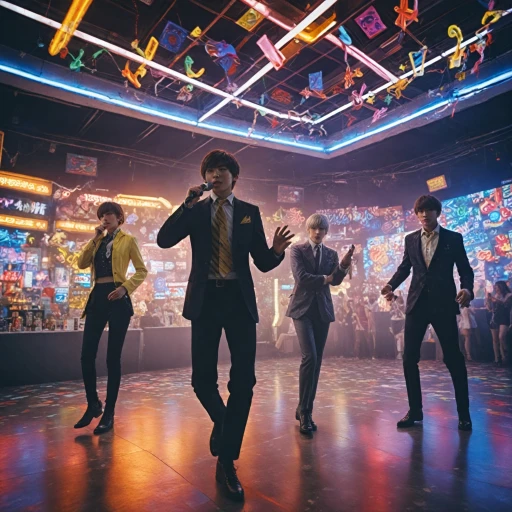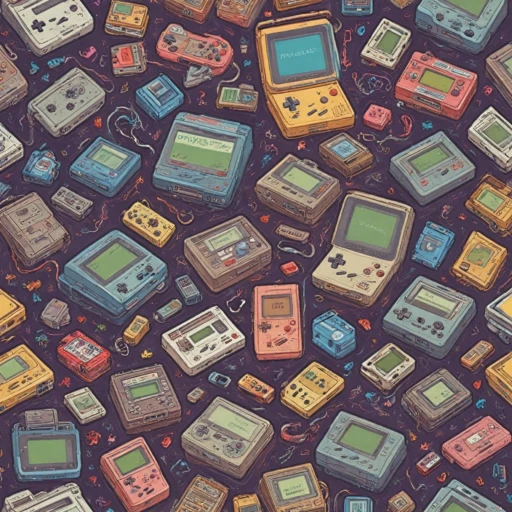
Understanding the Role of Icons in Gaming Consoles
The Power of Visual Symbols in Gaming Experiences
In the world of gaming consoles, the role of icons cannot be understated. They're much more than simple images; they're the gateway to navigating complex systems and enhancing user experiences. Icons bridge the gap between players and technology, acting as visual shortcuts on a digital screen. Whether it's the app library on an iPhone or icons on an iPad, their design directly impacts usability and user satisfaction. Icons are omnipresent across various gaming levels, providing immediate visual cues for players. Be it selecting a mode or customizing app icons, these small yet potent symbols hold significance in enriching the gaming journey. From the app icon you tap edit on to enable dark mode, to the darker icons signaling a dungeon level, each icon serves a specific purpose. Moreover, icons on the screen link players to different functionalities seamlessly. In platforms like iOS, having a consistent icon set is crucial. The intricacies, like stroke width and color app choices, matter in ensuring user-friendly navigation. It's essential to respect the rights reserved principles while designing to adhere to privacy policy norms, giving players a reliable interface. As icons evolve, so do the expectations attached to them. With trends like dark mode gaining popularity, there's heightened interest in how these icons adapt to provide an optimal visual experience without straining the eyes. This involves a thoughtful shift from the traditional white and bright tones to darker settings. To delve deeper into how gaming consoles continue to adapt with these shifts and understand their implications, consider exploring the evolution of icon designs on modern platforms such as the world of gaming consoles. Understanding these changes illuminates the innovative efforts behind your gaming experience.The Evolution of Icon Design: From Bright to Darker Tones
The Shift Towards Deeper Tones in Game Interface Design
Modern gaming consoles have undergone an intriguing transformation in terms of their visual interface, notably in the color and design of icons. In earlier iterations, icons were predominantly bright and vibrant, aiming for maximum visibility on the screen. However, there has been a noticeable shift towards deeper, darker tones, influenced by trends in app design and user preferences for more subdued aesthetics. The adoption of dark mode across various platforms, including popular gaming consoles, mirrors this evolution. Dark icons and darker app interfaces are not just visually striking; they also cater to the gamer’s preference for immersive environments. Think of navigating through a dungeon in a game; darker tones offer a seamless blend with the setting, enhancing the thematic experience. Icons that transition from bright to dark modes allow a color app scheme that aligns with the overall screen aesthetics, helping users engage on a deeper level. This trend draws inspiration from mobile operating systems like iOS and Android, where the user has the ability to customize their icons. Features such as the ability to tap edit, set iOS options for color icons, and organize their app library reflect this personalization trend. Likewise, gaming consoles are moving towards customizable interface options, allowing users to add a personal touch to their screens. The level of interface customization speaks to the shifting demands for privacy policy considerations and rights reserved elements that safeguard user interaction. Furthermore, as console interfaces become more sophisticated, the technical challenges of designing such darker icons grow. Crafting icons that maintain clarity in dark mode display requires attention to stroke width and contrast to ensure they are distinct against various backgrounds. Technical prowess is necessary to balance these design elements, ensuring functionality isn't compromised. As we explore these changes, it's evident that the evolution in icon design not only serves an aesthetic purpose but also enhances the overall user experience. For more insights into the thrills of such integrations in gaming consoles, you can explore the thrills of Moza racing. This intersection of design and function sets the stage for the future of gaming console interfaces, reflecting broader design trends across digital platforms.Psychological Impact of Darker Icons on Gamers
The Psychological Influence of Darker Icons on User Experience
In the realm of gaming consoles, the shift towards darker icons is not merely an aesthetic choice. It delves deeper into the psychological impact these icons have on gamers. The use of dark mode and darker tones in app icons can significantly alter the mood and engagement level of users. This is particularly evident when users interact with their consoles in dimly lit environments, where darker icons on the screen can reduce eye strain and enhance focus.
Dark icons are often associated with a sense of mystery and depth, which can be particularly appealing in games that explore themes of adventure and exploration, such as dungeon crawlers. The color palette of dark icons can evoke a sense of immersion, drawing players into the game's world. This psychological link between icon design and user engagement is crucial for developers aiming to create a cohesive gaming experience.
Moreover, the customization options available for app icons, such as those on iOS devices like the iPad and iPhone, allow users to personalize their interface. This personalization can enhance the user's connection to their console, making the experience more personal and enjoyable. The ability to tap edit and customize icons to a darker mode can also reflect the user's personality and gaming preferences.
However, the transition to darker icons is not without its challenges. Designers must carefully consider the stroke width and contrast to ensure icons remain visible and intuitive. The balance between aesthetic appeal and functionality is delicate, and any misstep can lead to user frustration.
For those interested in the broader implications of icon design and its impact on gaming, exploring the value of pre-owned video games can provide additional insights into how design choices affect user engagement and satisfaction. This exploration can offer valuable points for developers and gamers alike, emphasizing the importance of thoughtful design in the gaming industry.
Technical Challenges in Designing Darker Icons
Challenges in the Technical Design of Dark Icons
The development of dark icons for gaming consoles presents multiple technical challenges, primarily due to the need to balance aesthetic appeal with functionality. As gamer preferences shift towards darker tones, reflecting trends in dark mode adoption across platforms, developers must navigate the intricacies of icon design. One of the primary technical challenges is ensuring that icons are easily distinguishable even in low-light or darker color environments. This requires careful consideration of stroke width and the color app palette used, as well as ensuring sufficient contrast against dark app backgrounds. For instance, while incorporating a darker color scheme, developers must avoid icons screen redundancy, which can make navigation cumbersome, especially on smaller devices like the iphone and ipad. In darker themes, ensuring that the user can easily customize their icons is also crucial. This ties into user interface considerations, where the ability to tap edit app icons and modify them in the app library becomes an essential functionality. Users often look for seamless ways to align their screen elements with personal preferences, which can include darker themes for added aesthetic or battery-saving reasons. The technical prowess required to set ios app icons and maintain an optimal user experience is further complicated by the dark mode standards set by platforms like ios and android. Dark app icons must also consider the privacy policy constraints and rights reserved requirements when it comes to branding and user data protection. In another layer of complexity, these icons must be designed with responsiveness across different display modes and devices, ensuring that icons appear consistent whether on an ios screen or when viewed through an external link from different levels within a game. Additionally, when gaming consoles incorporate app stores, the download experience should remain seamless even as users transition between modes. Considering these technical elements, the ongoing innovation in icons ios design shows a commitment to meeting user expectations and enhancing the gaming experience. Moving forward, developers will continue to address these technical challenges in their effort to add collections of intuitive and visually appealing icons.Case Studies: Icon Design in Popular Gaming Consoles
Icon Designs in Notable Gaming Consoles
In the gaming industry, icon design plays a pivotal role in enhancing user interaction. As icons have surged from bright to darker tones, iconic gaming consoles have adapted this trend, offering insights into their implementation and user reception. For instance, one major gaming console developer has embraced the darker iconography to align with its dark mode setting. This change caters to users’ preferences for understated, less intrusive aesthetics. The shift enhances screen navigation, particularly for late-night viewings where a darker interface proves gentler on the eyes. Another notable gaming system offers customizable icon displays which, through its operating system, allows users to choose between lighter or darker icon settings. This flexibility appeals to individual tastes and helps players fully personalize their gaming interfaces. By tapping into such user-centric customization, these consoles have effectively linked interface design with user engagement. Moreover, technical challenges such as balancing stroke width and color contrasts have been addressed creatively. This includes expanding icon collections to optimize clarity in various lighting conditions, impacting how users download and engage with apps on their consoles. The trend of darker app icons is not limited to gaming platforms; it echoes across multiple devices like iPads and iPhones, where darker themes contribute to both aesthetic appeal and battery efficiency. In summary, popular gaming consoles demonstrate a nuanced understanding of darker icon designs, balancing technical constraints with user preferences to provide an engaging, customizable, and visually comfortable gaming experience.Future Trends in Icon Design for Gaming Consoles
Embracing Shadowy Dimensions: Icon Design's Path Ahead
In the ever-evolving landscape of gaming consoles, icon design continues to play a pivotal role in enhancing user experience. Today's trend of shifting from bright to dark tones hints at what we might expect in the future. The use of darker icons is an ongoing journey that seems to gather more attention with each new product release.
For designers, the future promises to be filled with innovative challenges. As dark mode becomes increasingly popular on devices such as iPhone and iPad, the demand for seamless integration of dark icons with screens and color contrasts is increasing. This pathway, however, requires a delicate balance to maintain visibility and accessibility.
- Customization and Personalization: Users are now more inclined to customize their app icons. With advancements in icon design tools, individuals can easily tap edit on their icons screen to add a personal touch or even create an add collection of favorites.
- Reflecting User Preferences: The trend towards app library organization allows users to control their interface, thereby increasing the necessity for mode dark options.
- Technology Integration: Both Apple Support and others continue to innovate in ways we interact with our devices. This constant evolution breeds sophisticated privacy policy considerations and impacts the stroke width of icons to suit the dark icon aesthetic.
The transition toward incorporating darker themes presents technical challenges, yet its popularity remains unwavering among users who are eager for new and dynamic features. As an industry, respecting user rights is paramount, ensuring a unique and expansive experience that offers both beauty and function.











